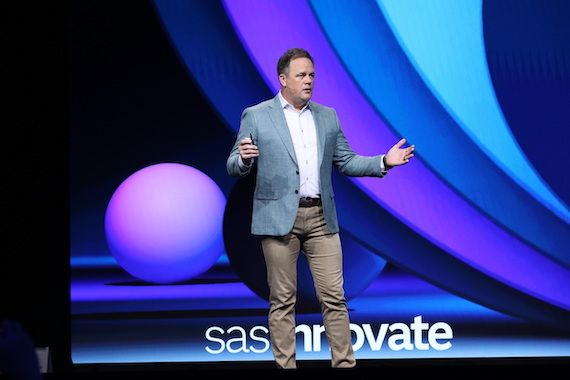


Bryan Harris, CTO of SAS, a leading global provider of data analytics solutions (Photo: SAS)
TECHNO SANS ANGLES MORTS dissects current technologies, meets the brains behind these innovations and explores the digital tools offered to Quebec businesses. This section allows you to understand today's trends in order to be ready for those of tomorrow.

TECHNO WITHOUT BLIND SPOTS. The interest of generative artificial intelligence (AI) for the generation of texts and images is well known. But it is also starting to interfere in data analysis. Be careful though, it cannot be used in all sauces.
“If there's one lesson we've learned in the last year and a half with our clients, it's that great language models (Editor's note: large language models in English, or LLM, the technology behind conversational robots) cannot solve your business problems alone. Generative AI is one tool among many, and sometimes it's not the tool you need,” says Marinela Profi, global head of AI strategy at SAS, at the outset. the occasion of the SAS Innovate conference, which was held in April in Las Vegas.
SAS is a leading global provider of data analytics solutions, primarily for large enterprises and governments. Generative AI was at the heart of its last annual conference, as was to be expected, but while some of its competitors seem ready to bet everything on this new technology, caution was called for at SAS, especially compared to advanced analytics.
“We’re a 47-year-old company, so we’ve seen this movie before. A technology becomes fashionable and catches fire, then what's left is not what was announced,” explains Bryan Harris, the technology director of SAS, whose IPO is planned for 2025.
Generative AI could still have its role in the processing of big data, predicts SAS, which has already adapted several of its software to make room for this technology. “In any business scenario, around 20% of tasks and tools are likely to be related to generative AI. For everything else, we still need AI which is not generative,” notes Marinela Profi.
Here are three examples of uses where generative AI could be particularly useful in companies that want to create value with their data.
Use 1: interact more easily with big data
Gone are the days when you absolutely had to go through a specialist to obtain information from your company's data. A chatbot that has access to your data can indeed allow any employee to ask questions in plain language to obtain answers to their questions.
Several companies on the market already offer tools of this type, such as DataChat.AI, for example.
For SAS, this possibility is real, but it must also be used with caution. “We risk having the same problem as in meetings: people ask the wrong questions!”, illustrates Bryan Harris.
Fortunately, it is possible to supervise the practice. For example, SAS has developed a tool where requests that can be requested from the model are pre-approved and pre-recorded by specialists. Generative AI and semantic analysis tools help convert a user's request into these approved queries, and another generative AI tool helps display the response in an easy-to-understand way, and in some If so, tell him what he should do next.
Note that AI is not used here to replace existing data analysis tools, but rather to allow more people to access them. Depending on the needs of the company, a solution can benefit both a senior manager who wants to obtain information quickly and an employee in the field.
Use 2: generate synthetic data
Large language models can also be used to generate synthetic data. For SAS, this use may be particularly interesting for creating AI models from biased data, or from data where important information is under-represented.
“Take fraud detection for example. “It's difficult for an AI model to learn to recognize them with a bank's raw data, since these are rare events,” said Stu Bradley, senior vice president responsible for risk management solutions at the bank. fraud and compliance at SAS.
The generation of synthetic data allows the creation of new datasets, where these searched events are more frequent. The models trained on these new datasets should therefore be better able to detect future frauds. Until now, to develop such models, companies like SAS had to employ other tactics, such as combining transactions from different banks.
This strategy can also be used with images. The paper company Georgia-Pacific, for example, presented images of deformed tree trunks created with generative AI to SAS Innovate, which are used to train its image recognition models.
“It’s a way that we developed to focus on rare events. These synthetic images allow our systems to better recognize these events in the real world later,” says Sam Coyne, director of artificial intelligence at Georgia-Pacific.
Use 3: generate code to process your data
Generative AI is obviously also used to help developers who analyze data, notably with tools like ChatGPT from OpenAI, GitHub Copilot from GitHub, Gemini from Google or Viya Copilot from SAS.
These tools won't transform data analytics itself, but they should make developers and analytics more efficient. “Tasks like programming from scratch will no longer be relevant, debugging will no longer require nights and weeks spent on the keyboard and code migration will be extremely accelerated,” predicts Marinela Profi. So they'll have more free time to focus on questions like “What new things can I build?” and “How can I improve AI-generated code?”
